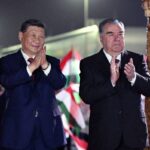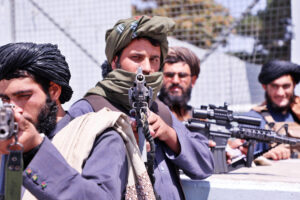It was more than a decade ago that I first visited Nukus, the capital of the autonomous republic of Karakalpakstan, while researching the maiden edition of the Bradt Travel Guide to Uzbekistan.
It was the tail end of a long and challenging trip. Tourism was still in its infancy in the area. We struggled to find places to stay and eat. Fuel shortages had caused lines at gas stations that were probably visible from space.
Nukus seemed gray and depressing, especially when compared to well-established destination of Khiva, about a four-hour drive further southeast. Even the Savitsky Museum, with its renowned collection of Russian avant-garde art, felt forlorn. Underappreciated staff struggled to protect this precious legacy from the leaking roofs, dust and general decay.
I would not say it was love at first sight. And so the autonomous republic got only a few cursory pages at the end of the Bradt guide. Who, after all, was realistically was going to go there on vacation?
Fast forward to 2023, and my co-writer Stephanie Adams and I have just sent the first guidebook dedicated entirely to Karakalpakstan to press. It is a full-length, 200-page-long book, commercially published by an international travel publisher with a strong reputation to uphold.
So, what has changed since that first dismal visit? Well, Karakalpakstan has changed. And so have I.
Before the deadly July 2022 protests, it was rare to read any kind of media coverage about Karakalpakstan. Even in neighboring parts of Uzbekistan and Kazakhstan, those who have visited are in a small minority. There is a little more international awareness of the Aral Sea, but a manmade environmental disaster and a former Soviet bioweapons base are not the kind of assets consultants would typically advise you draw attention to when trying to promote a tourist destination.
What Karakalpakstan is doing now, though, is embracing its potential for dark tourism. Donors are interested and money is being spent on developing infrastructure for eco and adventure tourism. Long-established attractions like the Savitsky Museum and newer features like the quirky Stihia electronic music festival are tempting culture vultures out west.
Nukus itself has had a makeover to the point that the center is scarcely recognizable. The government is working hard to develop the city and Karakalpakstan’s other tourist attractions and to integrate them into regional itineraries.
If you want to see glitzy UNESCO monuments, go to Khiva, Samarkand, and Bukhara. Karakalpakstan’s tourism offering is more raw and rugged. But significantly, there is also a much greater sense of the relationship between the people, their cultures, and the environment. The Beleuli Caravanserai on the barren Ustyurt Plateau is built with stone blocks embedded with seashells that serve as a reminder of a time when this area was an ocean floor. Karakalpak nomads dug deep furrows in what is now the Saigachy Reserve to trap herds of historically abundant saiga antelope. In Muynaq, skeleton ships lie solemnly on the sands of the Aralkum, the world’s newest desert, in testament to how the town was once a thriving fishing port.
In Karakalpakstan, which its physical remoteness from the Uzbek and Tajik cultures dominant further to the east, it is also easier to see, experience and appreciate the cultural identities of minority groups. There are Karakalpaks, of course, and then Kazakhs and Turkmens, among others. There is an intermingling of many different languages on the streets of Nukus.
The Berdaq Museum of the History of Karakalpak Literature and the Museum of History and Culture of Karakalpakstan showcase predominantly vernacular culture. Statues and mausolea commemorate the local heroes and historical figures Ernazar Alakoz, Narindjan Baba, and Al Beruni. Karakalpakstan’s artisans are still producing yurts, woven reed screens, jewelry, and other decorative items, preserving their applied arts traditions. Tourism offers craftsmen not only an opportunity to diversify their revenue streams through workshop tours, yurt stays, and handicraft sales, but also affirmation that their cultural heritage and skills are things of value and worth passing on to the next generation.
The Bradt guide to Karakalpakstan is a celebration of the unique identity of this complex but unendingly fascinating place, its people and their resilience in the face of extreme environmental, economic and, at times, political challenges. My hope is that the guidebook will help balance the dominant narrative of the Aral Sea disaster against the many other extraordinary things Karakalpakstan has to offer and that it will be an authoritative source of tourist information that will not only inspire adventurous travelers but also aid their exploration of the least visited part of Central Asia.
Source : Eurasianet
















